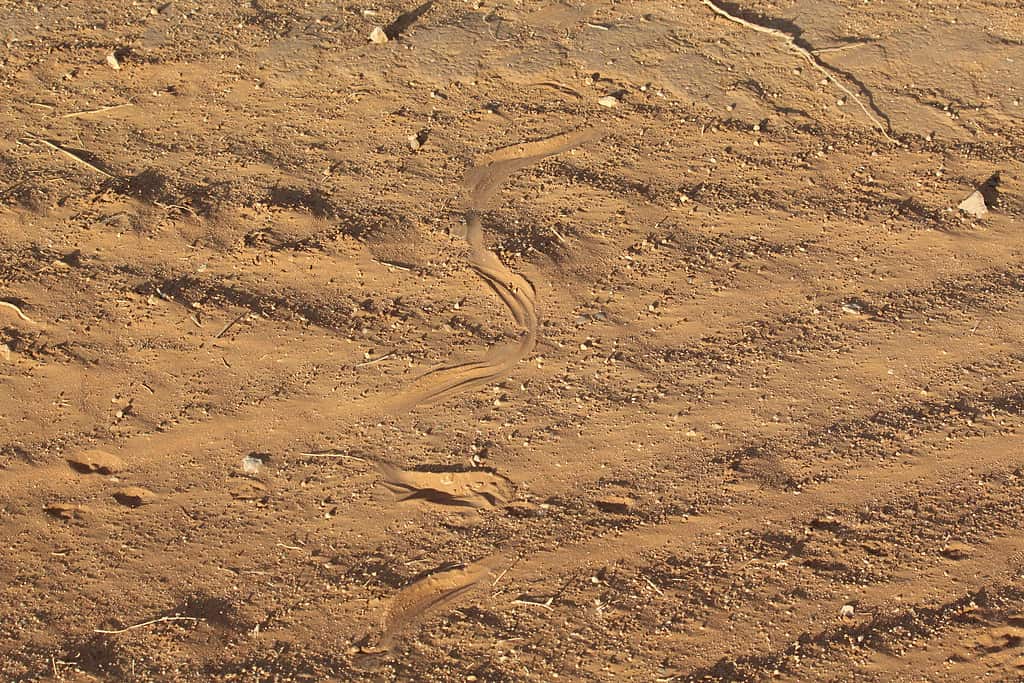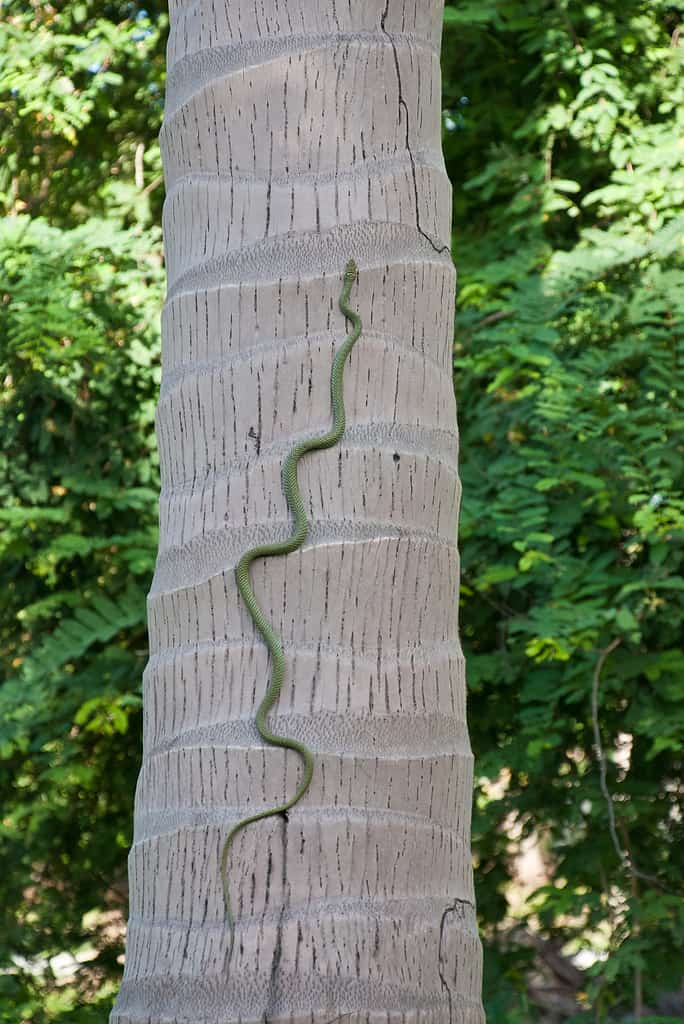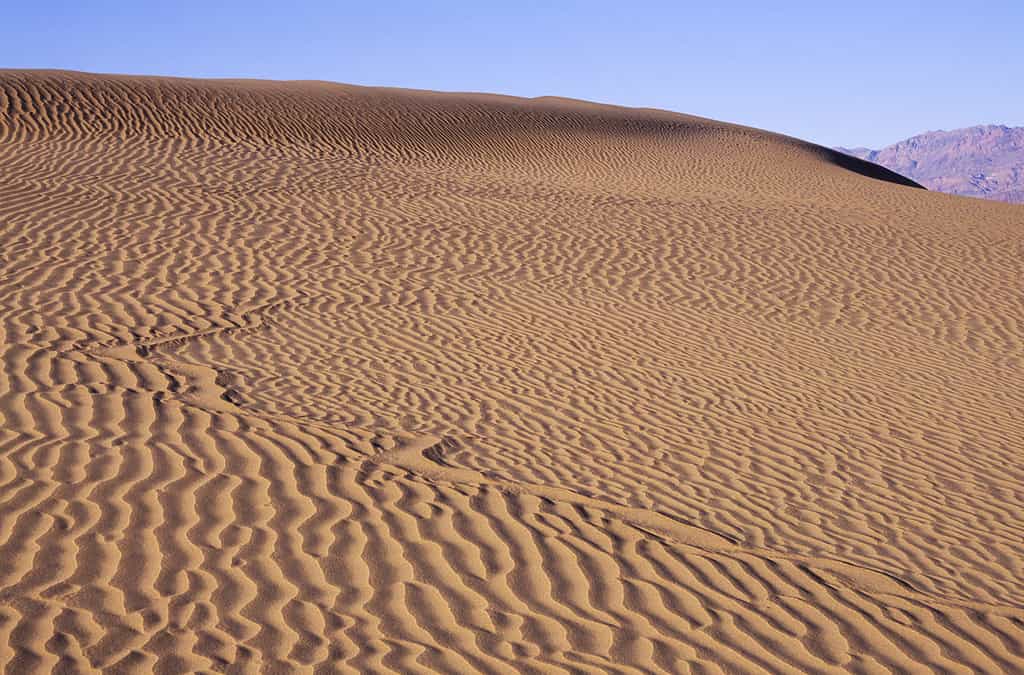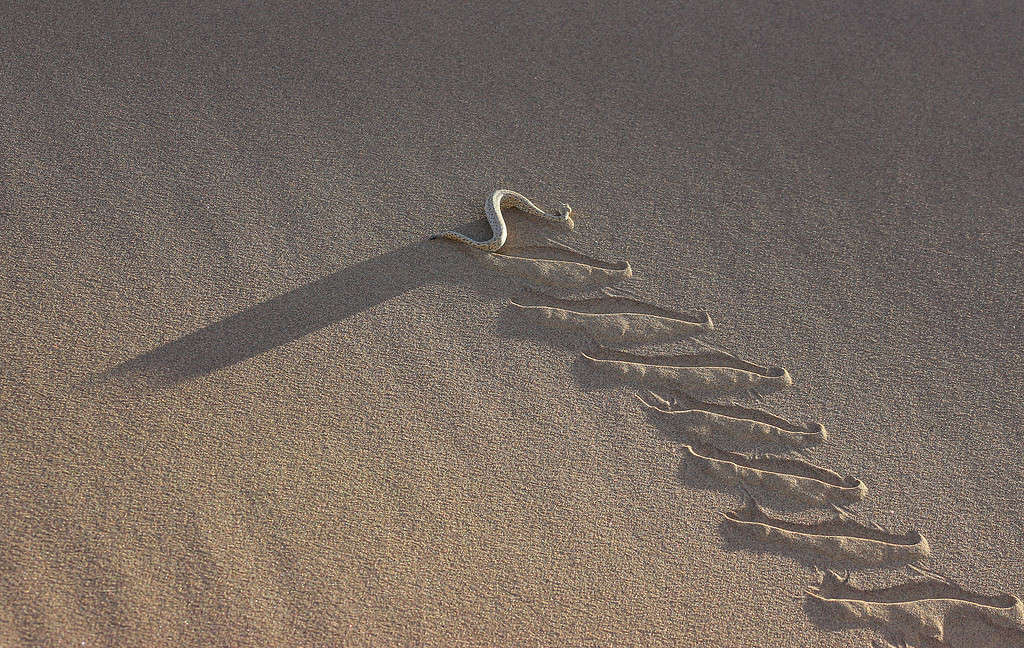It is always helpful to know various snake tracks, especially if you live in an area with many venomous snakes. It is not uncommon for snakes to slither through homes or gardens, sometimes making urban and suburban areas their home. And while you might not have physically seen any snakes, you should always be on the lookout for their tracks. Other signs you might have a slithery friend nearby are snake feces, holes, skin, or other indications. And unfortunately, snakes don’t have toes or feet, so unlike most animals, you cannot identify them by their footprints. However, they still leave tracks as they move across the dirt, sand, and mud. Snakes have five ways of moving, and the tracks will reflect these locomotions.
Snake Tracks in Dirt, Sand, and More
It is easy to bypass a snake track without noticing it, and snakes often occur on terrain where they can’t leave tracks like rocks or water. Therefore, dirt, sand, and mud are the best receptors for snake tracks. The five ways snakes move are:
- Lateral undulation
- Concertina locomotion
- Rectilinear Movement
- Slide-pushing
- Sidewinding
If you happen to see straight snake tracks, it is likely from a larger, heavier snake species.
Lateral Undulation
The primary locomotion that snakes exhibit is lateral undulation. For example, the tracks will form in waves that bend from side to side. Furthermore, the waves will move from head to tail. However, if the snake slithers over an object like a plant, stick, or rock, the section of the body close to the obstruction exerts a force against it, and the serpent will deform around it. But, if a snake moves over several objects, the lateral forces counterbalance each other, and the snake moves forward. When observing this movement, it is easy to see where the snake exerts more force against obstructions in the environment. This locomotion doesn’t leave a print because the snake’s body follows the trail created by the head and neck, but there is a lot of sliding friction present.

Lateral undulation snake tracks through the sand are seen here.
©KSullivan/Shutterstock.com
Concertina Locomotion
This movement slightly resembles an accordion, as the snake anchors a section of its body to a surface. Next, it pushes or pulls a different section of its body away or towards the anchored body part. So, it essentially looks like the snake is bending its body and straightening it out again. This movement burns more calories than sidewinding or lateral undulation, which requires less effort. Unfortunately, it’s tough to get footage of this track because there are usually only two places this movement occurs, in a narrow space like a tunnel or on trees.

This green snake is using concertina locomotion to climb a coconut palm tree.
©ARZTSAMUI/Shutterstock.com
Rectilinear Movement
This movement is closely associated with large and heavy snakes like pythons, boas, and puff adders. A rectilinear movement track is basically straight with no wave-like movement and is probably the easiest to identify. This track will only bend when the snake needs to change direction. The movement occurs by alternatively lifting the belly scale, pulling it forward, downwards, and finally backward, making the snake crawl along on the surface. Therefore, this type of locomotion has a lot of static friction, which differs from lateral undulation and sidewinding, as these movements require a lot of side-to-side motion.

A snake track is seen here on a sand dune in Death Valley.
©Sasha Buzko/Shutterstock.com
Slide-Pushing
This movement is only used on smooth surfaces. Therefore, tracks from slide-pushing are few and far between. It only occurs when a snake tries to escape quickly on smooth surfaces and, in doing so, undulates irregularly. While the snake bends its body irregularly, it pushes its tail against different points, attempting to move the center of its body mass. Slide-pushing forms broad tracks on surfaces like desert sand because the snake compresses its body in wide undulations.
Sidewinding
The movement called sidewinding is unique to snakes. Sidewinding creates individual tracks perpendicular to the direction the snake is moving. The tracks are straight segments that slope. Therefore, it is easy to identify these tracks, but they are rare because not many snakes can make them. The species that use this movement only use it on loose sand; for example, the desert. However, some caenophidian species sidewind on even surfaces. The reason why desert snakes use this locomotion is to ensure minimal contact with the hot sand. Snake species that use sidewinding include:
- The Homalopsine family of snakes native to Southeast Asia
- The Mojave sidewinder rattlesnake native to the deserts of the United States and Mexico
- Namib desert sidewinding adder native to the deserts of southern Angola and Namibia

Bitis peringuey makes side winding tracks to climb a dune in Namibia.
©Chantelle Bosch/Shutterstock.com
The photo featured at the top of this post is © Piece of peace/Shutterstock.com
Discover the "Monster" Snake 5X Bigger than an Anaconda
Every day A-Z Animals sends out some of the most incredible facts in the world from our free newsletter. Want to discover the 10 most beautiful snakes in the world, a "snake island" where you're never more than 3 feet from danger, or a "monster" snake 5X larger than an anaconda? Then sign up right now and you'll start receiving our daily newsletter absolutely free.
Thank you for reading! Have some feedback for us? Contact the AZ Animals editorial team.






